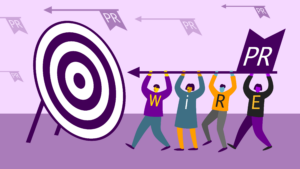What is the Perfect Frequency of Sending Press Releases
Public relations personnel know that timing is everything, especially when trying to promote an event or company. Finding out the right frequency of sending releases still eludes many professionals. While the number of times a company should send a release, there are some rules of thumb you should follow.
Communication with journalists is an important process but if you contact them too few times, they will not remember you or your company. If you contact them more than journalists want, they get annoyed and ignore you. Although every industry is different, you can determine the right frequency for sending a press release for your industry. You will determine the exact frequency with the guidance of this article.
Frequency of Sending Press Releases
1. Do Research
You have to know the deadlines of the publications, radio, television stations, podcasts, and online organizations. They vary depending on the type of organization and the news they produce. For example, most magazines work three months ahead. Therefore, you should send a release now for a holiday event. Trade magazines often have shorter lead times, but even they work at least a month in the future. Newspapers could be daily or weekly. For daily publications, you want to send it in the morning. Editorial meetings in the morning decide the news for the day. For weeklies, find out the best day to send a release. You usually have one day where press releases are analyzed and sorted before going to the assignment. Online publications provide content 24/7. You should be aware of the fact that frequency of sending releases to them is two or three times a day. Radio and television work much like dailies. They have editorial meetings that decide the content for a show.
2. Know Who to Attract
When you have figured out the deadlines, you should also know who you are trying to attract. For industrial journalists and those working for dailies, you will need to target a specific person. Once you know that person, you can send a release to him or her weekly. Later in the week, you might want to follow up on the release with a phone call or e-mail. If you are respectful when you call, you will get an honest answer. The journalists would not turn you away or ignore you.
3. Promote Events
For an event, you want to send out one release about three months ahead to magazines, two weeks prior to the event for radio, television, and print publications. You also want to post your release on your social media about one month before the event and keep posting on social media every day until the event. You want to post during the event and after the event too. Before the event, it is good to send all types of media a reminder. In addition, if you are co-sponsoring the event, you should have the other organization also send releases to the media. It carries more weight.
4. Don’t Overload Editors
Once you understand the deadlines and get to know the person you are targeting, then, you have to figure out how often, the journalist should hear from you. Your press release will be one in a pile of releases received on any given day. Take that into consideration when sending. Press releases that have a time-sensitive topic should be sent at least once-a-week while those that are not time-sensitive. For example, if you a company that is set to launch a new product, you would want to send releases weekly or daily around the date of the launch and shortly after the launch. If you don’t have a new product but want to drum up media attention about its health effects, you could send a release once-a-month with a follow-up call two weeks later. If your goal is to build a relationship, you should send about once-a-week or once-a-month. For trade journalists in your industry, send your releases weekly even if the deadline is several weeks away. Make sure you send enough to make them think about you without overloading their inbox or voice mail.
5. Use Social Media
Often public relations representatives fail to forget the other places they should send releases. They aren’t just for journalists. You also should post on your social media because often journalists are scanning social media for interesting ideas for stories. You should send the release to clients and potential clients because need to know what you are doing and what is “your news.” And, lastly, you should post on your website. Journalists always go to newsrooms or press rooms on websites to get information about a company, especially if that company is in the news for something else. Plus, the press release on the website acts as new and relevant content to boost your search rankings.
Remember to send press releases regularly without sending too many. Using these tips, you are more likely to get noticed.
Frequency of Sending Press Releases – THE NEXT STEP:
Scheduling your press releases according to the frequency of the publications in your distribution list is a good idea. With Faselis, you can plan your distribution with exact timing. For example, you can organize your new tech gadget press release distribution to the fifth of the month for monthly magazines, to the 20th for biweeklies, to the 25th for weeklies, and to the 30th for dailies and the first of the next month for other publications.
You should take a look at Faselis solutions for the distribution planning functionality of the Faselis platform.
by Louise Harris









